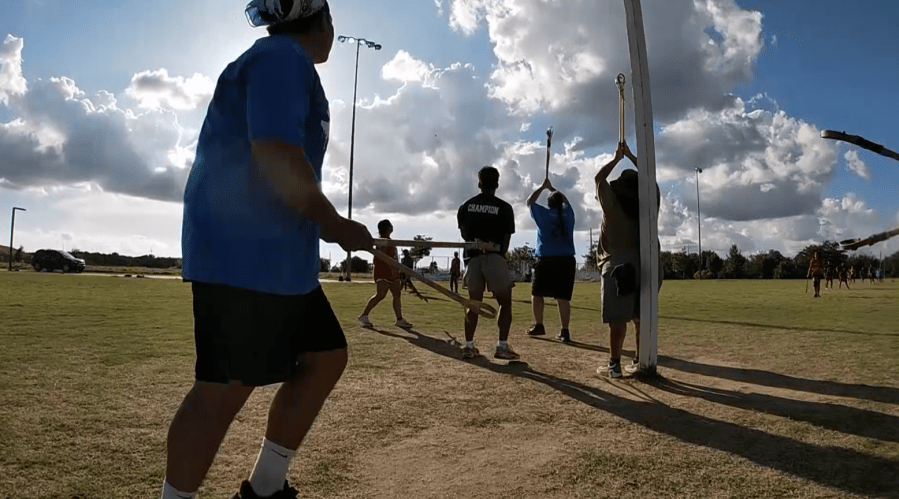
DURANT, Okla. — Amid the bustling modernity of superhighways and towering structures at the Choctaw Cultural Center, a timeless tradition unfolds on a simple patch of grass. This is not a soccer or football match, but a game far older—stickball, a sport with roots stretching back hundreds, if not thousands, of years in North America.
Jared Tom, an athlete and coach, passionately describes it as “America’s oldest field sport.” He explains, “Choctaws play it along with other southern tribes. Choctaw style is played with two sticks.” On this warm evening, Tom and Kailyn Ward, both players and coaches for the Choctaw Tvshka Homma teams, engage in a series of scrimmages as they prepare for the Stickball World Series. Tom’s focus is clear: “I want to see what we’re able to do in a scrimmage format. We’re going to mix it up a little bit.”
The Historical Roots of Stickball
The first documented mention of stickball dates back to 1729, recorded by a Jesuit priest. Historically, the game was far more violent, earning the moniker ‘the little brother of war.’ Coach Tom notes, “Back then, it was seen as a way to settle disputes.” The game’s evolution reflects broader changes within Native American communities.
The 5 Civilized Tribes, including the Choctaw, brought stickball to Oklahoma, even as lacrosse gained popularity elsewhere. Initially, stickball was played in private gatherings, but this changed in the 1970s when the game was standardized. Teams were limited to 30 players, and the goalposts were set at 12 feet high and four inches wide. While the rules reduced the violence, the speed and aggression remained intact.
Modern Stickball: Tradition Meets Competition
Today, stickball is a vibrant part of the Choctaw Indian Fair in Choctaw, Mississippi, where it coincides with the annual celebration. Kailyn Ward, reflecting on the intensity of the game, shares, “We play with no padding. We’re going 110% out on the field, full contact.” The fair features multiple Choctaw teams, including men’s, women’s, and youth divisions.
Ward is optimistic about the future, particularly for the women’s team. “We put in the work every year,” she asserts, with hopes of competing for a championship by 2025. The dedication and enthusiasm of the players underscore the cultural significance of stickball, a sport that continues to thrive in a rapidly changing world.
Stickball’s Cultural Significance
Stickball is more than just a game; it is a cultural touchstone that binds communities and preserves history. The sport’s endurance in Native American culture highlights the importance of tradition amidst modern influences. Games, nations, and traditions are often intertwined, much like the tightly bound sphere of a stickball.
As the Choctaw Indian Fair approaches, the excitement builds. The Stickball World Series is not just a competition but a celebration of heritage and resilience. For more information on the Choctaw Indian Fair, interested individuals can explore various resources to learn more about this unique cultural event.
Great State is sponsored by True Sky Credit Union. Follow Galen’s Great State adventures on social media for more stories that celebrate the vibrant traditions and communities of Oklahoma.





